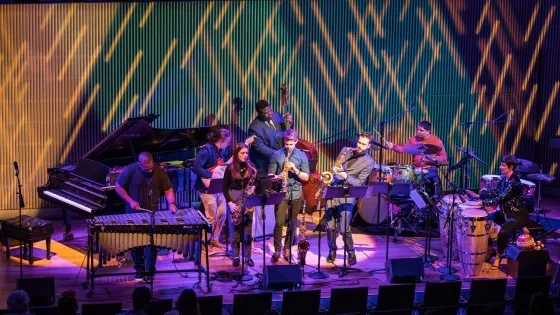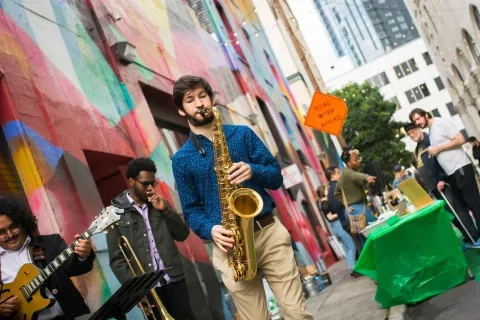RJAM/SFJAZZ Side-by-Side Honors SF Jazz Icon Joe Henderson
SFCM's Roots, Jazz and American Music (RJAM) program is back at SFJAZZ as part of their Joe Henderson Festival, a tribute to a saxophonist indelibly linked with the city.
San Francisco was once known as "the Harlem of the West" for its jazz scene, and tenor saxophonist Joe Henderson was a huge part of that. Henderson left New York for SF in the early 1970s, and even spent some time teaching at SFCM. He lived, played, and taught in the city until his death in 2001, and a performance space at SFJAZZ is named for him.
The RJAM department's spring side-by-side concert at SFJAZZ on April 20, takes place as part of SFJAZZ's Joe Henderson festival, a four-day programming block with artists paying tribute to Henderson, including RJAM Director Jason Hainsworth, who will be playing selections from Henderson’s fifth album as a leader, Mode For Joe, on April 21.
Students will be playing the concert alongside SFCM faculty (many of whom are members of the SFJAZZ collective), including David Sánchez (tenor saxophone), Mike Rodriguez (trumpet) Andre Hayward (trombone), Randy Vincent (guitar), Warren Wolf (vibraphone), and Helen Sung (piano).
RJAM saxophone student Aidan Siemann, playing his last side-by-side before he graduates this year, says Henderson still looms large for younger jazz musicians. "You can't really get through learning about this music without encountering Joe and being influenced by him," Siemann says. "That's just how big his presence and influence was on the music. He defined an era of playing and composition that is really important."
The side-by-side concerts, Siemann says, "are one of the best parts about this program. I can't remember a single one where I was disappointed. Getting a week to rehearse and study and workshop original compositions and tunes and arrangements with amazing artists that we have on faculty? And then getting to perform with them at a great venue like SFJAZZ? There's really nothing better."
SFCM Jazz History Professor Patrick Wolff—himself a saxophonist—explained the importance of Henderson and his artistry. "What makes him so special is that he internalized decades of jazz history, from, basically Lester Young through, people like Junior Cook and Clifford Jordan, and and he operated in these different idioms—bebop, hard bop, modal jazz, post-bop, free jazz—really fluently."
He continued, "If there's one word that applies to all of his creative output, I would say it's intelligent. He didn't have the biggest sound, and he's not the most muscular player or the most aggressive, but he is arguably the smartest stylist of the tenor sax. Some people, when you pick their music apart, you think, 'Oh, well this is a little simpler than I thought it was,' but when you get into Joe Henderson's playing, both his writing and his improvising, everything adds up precisely."
The side-by-side concerts are a continuation of another aspect of Henderson's artistry: His generosity in teaching and mentoring younger musicians. "He was almost a guru in that way," Wolff says. "The best of the local musicians who lived here in the 1970s and '80s and into the early '90s, virtually all of them learned from him, either on the bandstand or at his apartment, with him sitting at the piano."
Learn more about studying Roots, Jazz, and American Music at SFCM.

